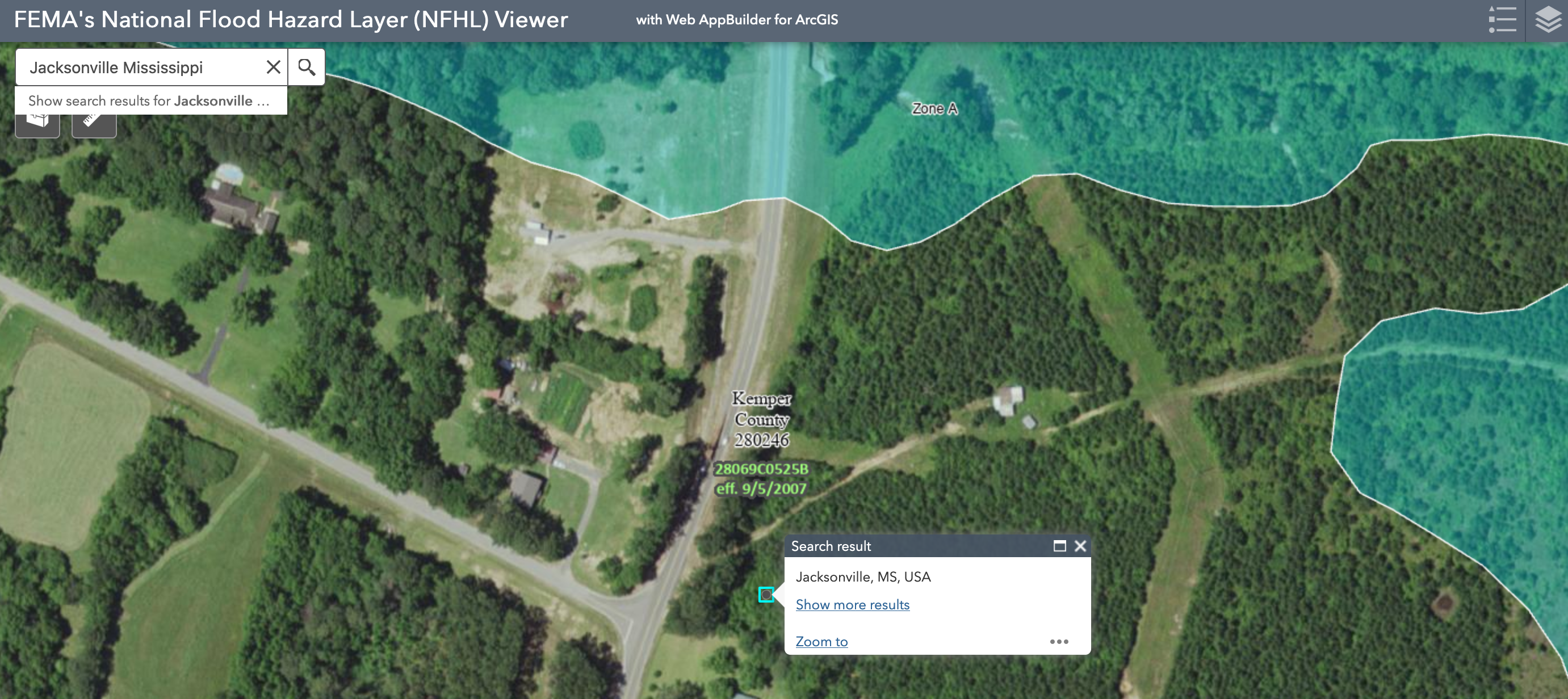Fall is peak nudge season. Relaxed from summer vacations, a few well-meaning bureaucrat types decide we should all start Preparing for The Worst while buying back-to-school supplies. And before anyone gets too keen about the winter break to care.
There’s National Preparedness Month, International Disaster Reduction Day, the Great Shakeout. It’s exhausting. And enough to make you stockpile only the sorts of snack foods that will survive nuclear attack. (We bet on Cheetos. Or Sour Patch Kids.)
That’s why we won’t raise our voice in the Cassandra chorus. But. Our view on the maps you need to stay safe has changed — and we hope to get you looking at things differently.

Drink in a Wider View
Resiliency Maps started as a way to help people navigate emergencies in their immediate surroundings. This is still worth doing. (More on how to get started here.) And, if you live in a rural area, stay tuned for an upcoming event.
What changed our thinking? Jackson, Mississippi. Some 150,000 residents there lost drinking water for seven weeks. Even after the boil notice was lifted, people were advised not to use tap water for baby formula.
The headline cause was a storm and flooding — but the underlying cause is slow-growing menace of underspending on infrastructure and poor maintenance.
Troubles stretch back decades. In 2012, things came to a crescendo when Jackson bombed an U.S. Environmental Protection Agency (EPA) inspection. The city was fined, ordered to “reduce direct exposure of raw sewage to low-income populations in Jackson,” and to complete the bulk of repairs in the next 11 years. Yet, the EPA notes that 300 boil water notices were issued over the past two years in the city.
No matter how prepared you are, it’s game over without clean drinking water.
The 2014-17 water crisis in Flint, Michigan, terrible though it was, seemed like a fluke. How many towns could really be in danger of losing drinking water?
Turns out, quite a few. A quick Google News search shows dozens of U.S. towns with boil notices in just the last week. They range from Cape Girardeau, Missouri (pop: 39,000), Audubon, Minnesota (pop: 560), Goochland County, Virginia. (pop: 24,727), Fritch, Texas (pop: 2,117) and Waterloo, Nebraska (pop: 848.) Causes include creaky infrastructure (broken mains) to the aftermath of Hurricane Ian.
Aside from keeping an eye on local infrastructure spending and checking for boil notices in any place you might spend time, there’s not a lot to “prepare” for. This isn’t a better-safe-than-sorry scenario.
Sure, there are a few things you can do. It’s worth checking out Federal Emergency Management Agency (FEMA) flood maps to determine what risk you run where you live. As far as we can puzzle out, insurance is a gray area — federal flood insurance covers some damages, and supplemental water line insurance covers others, but it’s not clear whether insurers cover costs (bottled water, a temporary move) if there’s no drinking water.
In 2010, the United Nations General Assembly recognized the human right to water and sanitation. They estimate that means between 50 and 100 liters of water per person per day (13-26 gallons) – yet the average American consumes 82 gallons a day, or 246 gallons for the average U.S. household of three people. Not counting pets. (Some 70% of U.S. households have feathered or furry friends, who also need clean water.) Even if you cut down on showers, you can’t rely on bottled water or boil your way out of that for long.
As climate change accelerates the pace and intensity of storms and infrastructure ages, the kind of resiliency maps you need change too. You still need to be aware of your surroundings – route out, amenities, hospitals, shelters etc. – but most likely you’ll also need to think about a Plan B for where to live if the water supply fails for more than a few days.
Cover image: Jackson, Mississippi map tile sets© Stamen Design, under a Creative Commons Attribution (CC BY 3.0) license.
